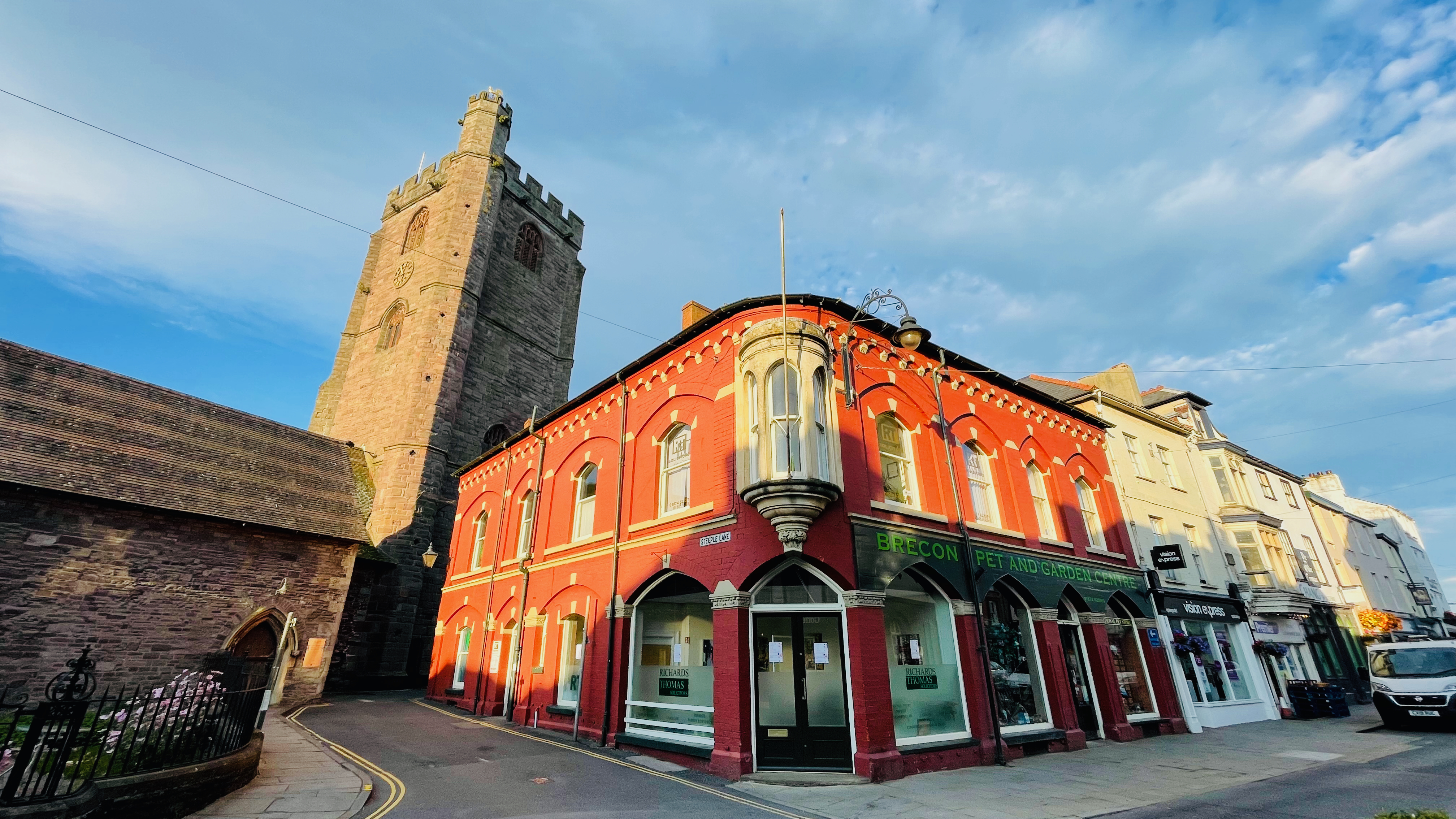
Continue our self-guided walk of Brecon along The Bulwark, taking in St Mary's Church and the Wellington Statue. This is the 2nd stop in WALK: The Brecon Story, our heritage trail around Brecon.
St Mary's Church
A few steps along the street, following the direction of the traffic we come, on the right to St Mary’s Church, once a so called ‘chapel of ease’ linked to what is now the cathedral. The top of one stone column inside suggests 12th century origins with the imposing tower following in the sixteenth. The tower is named after the Duke of Buckingham (1485-1521), a powerful local landowner who was born in Brecon Castle. He paid £2,000 for it before he fell out with King Henry VIII and was executed in London. His tower has been called “the finest in Powys”. The entrance facing you into the High Street, in contrast, was built in 1928!
Wellington Statue
A few steps further and we come into the Bulwark, dominated by its statue of the Duke of Wellington (1769-1852), the outstanding British military commander of the Napoleonic Wars, victor of the Battle of Waterloo and later, Prime Minister. It was created by Brecon-born sculptor John Evan Thomas (1810-1873) and erected four years after the Duke’s death. Look more closely and you will see this monument commemorates not one but two military leaders. The second is Sir Thomas Picton of Pembrokeshire (1758-1815). He was a highly controversial figure, a slave owner accused of torturing a girl in Trinadad. He was also considered to be the most important Welsh General fighting alongside Wellington at Waterloo. One of the bronzes on the plinth shows Wellington and Picton greeting each other. The other shows Picton’s death at Waterloo. A newspaper report of 1909 called Thomas ‘the greatest genius that Brecon has produced,’ in art and science.
The Bulwark
Look around the Bulwark and there is plenty of history to admire and architecture to hint at past wealth. The Wellington Hotel has an early 19th century facade added onto a structure that was around a hundred years older with 17th century elements to the rear. A newspaper report from August 1859 suggests that William Jones, a land surveyor and then owner of the ‘dwelling house’ asked to open it as the Wellington Hotel in honour of the ‘illustrious warrior’. The Borough Petty Sessions - the magistrates apparently decided that ‘there were already sufficient licensed houses in the town and refused to grant the licence’. Jones succeeded in overturning the decision by the following year, advertising the Wellington Hotel’s ‘six receptions and twenty bedrooms, stabling for ten horses and coach-house for six to eight carriages.’ He also organised a daily return ‘omnibus from the hotel to the Newport and Abergavenny railway station leaving Brecon every morning at 6am and arriving back at 10pm.
Next door, the offices of the Brecon & Radnor Express include a mid 18th century wooden staircase, wall panelling and marble fireplaces. The paper first appeared on Friday 4th October 1889 - a note to readers apologising that some of the news had been held over to make enough space for the advertising. To its left, 12 and 12a The Bulwark was probably built in the early to mid 17th century with a new top storey added in the nineteenth century (plaque 6). Across the Bulwark a range of mostly 19th century buildings show a rich variety of architectural detail.
The Bulwark is part of our WALK: The Brecon Story heritage trail. Click here to access the Google Earth map or visit the next place on our trail.
